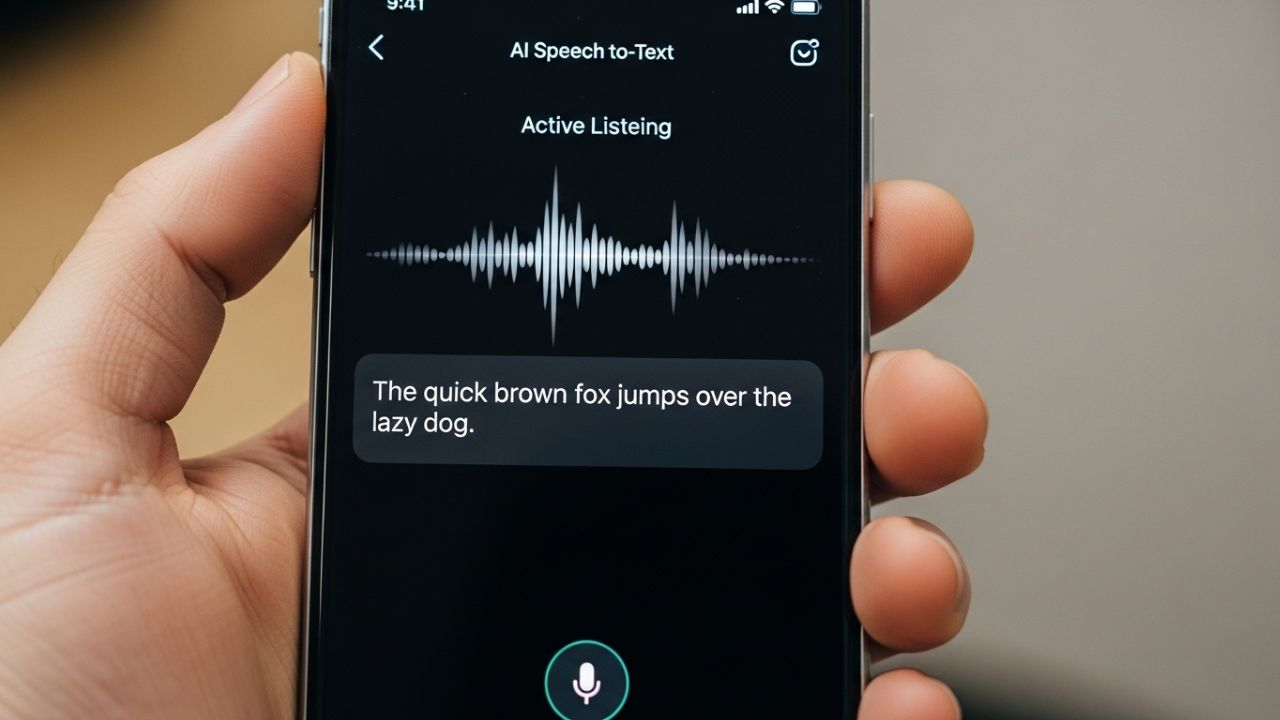Why Use Speech to Text AI Free Tools
In 2025, speech to text AI free tools are transforming how we work and create. These tools convert spoken words into text instantly, saving time for students, professionals, and content creators. Unlike traditional transcription, free speech recognition AI offers accuracy and accessibility without costly subscriptions. Whether you’re taking notes, transcribing interviews, or drafting emails, AI transcription free solutions streamline tasks. Popular platforms like Google Docs Voice Typing and Otter.ai’s free tier make it easy to get started. This section explores why speech to text online AI is a game-changer, highlighting its benefits for productivity and ease of use, especially for beginners looking to simplify workflows.
Top Free Speech to Text AI Tools in 2025
Several speech to text AI free tools stand out in 2025 for their accuracy and user-friendly interfaces. Google Docs Voice Typing is a top choice, offering real-time transcription within a familiar platform. Otter.ai’s free plan provides 300 monthly minutes, ideal for meetings or interviews. Microsoft Dictate, integrated into Office 365, supports multiple languages. Free voice to text AI tools like Dragon Anywhere’s trial mode offer robust features for beginners. AI dictation tool options often include cloud-based processing for seamless access across devices. This section reviews the best free tools, their features, and limitations, helping users choose the right one for their transcription needs.

How to Get Started with AI Transcription Free
Starting with AI transcription free tools is simple, even for beginners. First, choose a platform like Google Docs Voice Typing or Otter.ai. Ensure you have a quality microphone—most laptops or smartphones work well. Open the app, enable voice input, and speak clearly at a natural pace. Speech to text online AI tools often support multiple languages, so select your preferred one. For best results, minimize background noise and test the tool with short phrases first. AI audio to text systems learn from your voice over time, improving accuracy. This section provides a step-by-step guide to setting up and using free transcription tools, ensuring beginners can start transcribing with minimal setup.
Best Practices for Using Free Voice to Text AI
To maximize free voice to text AI tools, follow best practices. Speak clearly and at a consistent pace to improve accuracy. Use a noise-canceling microphone for better results in noisy environments. AI dictation tool platforms like Otter.ai allow you to edit transcripts in real time, so review and correct errors as needed. Practice in quiet spaces to train the AI on your voice. Free speech recognition AI tools may struggle with accents or technical jargon, so enunciate key terms. Save transcripts regularly to avoid data loss. This section offers practical tips to enhance transcription quality, helping users achieve professional results without spending a dime.
AI Dictation Tool Use Cases
AI dictation tool solutions are versatile, catering to diverse needs. Students can transcribe lectures for study notes, while journalists use AI transcription free tools to capture interviews accurately. Professionals rely on speech to text AI free apps to draft emails or reports hands-free. Content creators convert podcasts into blog posts using AI audio to text technology. Even casual users benefit by dictating shopping lists or journal entries. In 2025, tools like Google Keep’s voice notes make everyday tasks easier. This section explores real-world applications, showing how free AI transcription fits into various workflows, from academic to creative projects.

Limitations of Free Speech Recognition AI
While free speech recognition AI tools are powerful, they have limitations. Free plans often cap transcription minutes (e.g., Otter.ai’s 300-minute limit) or restrict advanced features like speaker identification. Accuracy may vary with accents, background noise, or complex terminology. Speech to text online AI tools require stable internet connections, which can be a hurdle in low-connectivity areas. Some platforms store data in the cloud, raising privacy concerns. Beginner putting guide users should compare free tiers to ensure they meet specific needs. This section discusses common drawbacks and how to work around them, helping users make informed decisions about free AI transcription tools.
Tips for Improving Transcription Accuracy
Improving accuracy with speech to text AI free tools requires strategy. Use a high-quality microphone and speak in a quiet environment to reduce errors. Train the AI by consistently using the same tool, as many adapt to your voice over time. Simple putting tips like pausing briefly between sentences help the AI process speech clearly. Edit transcripts immediately to catch mistakes while context is fresh. For technical terms, spell them out during dictation. AI transcription free tools like Otter.ai offer punctuation commands (e.g., “comma” or “period”) for cleaner output. This section provides actionable advice to boost transcription quality, ensuring beginners get reliable results every time.
Future Trends in Free AI Transcription Software
In 2025, best free AI transcription software is evolving rapidly. Advances in natural language processing improve accuracy for diverse accents and languages. AI voice typing for beginners is becoming more intuitive, with tools integrating into apps like Notion or Slack. Real-time translation features are emerging, allowing users to transcribe and translate simultaneously. Free AI dictation apps 2025 are also adopting offline modes for better accessibility. Privacy-focused AI models ensure secure data handling. This section explores how these trends make free transcription tools more powerful, encouraging beginners to adopt them for personal and professional use.
Conclusion
This speech to text AI free guide for 2025 empowers beginners to harness AI transcription effortlessly. From free voice to text AI tools like Google Docs Voice Typing to versatile AI dictation tool options, these solutions save time and boost productivity. By following simple putting tips like using quality microphones and practicing in quiet spaces, users can achieve accurate results. Whether you’re transcribing lectures, interviews, or notes, AI transcription free tools make the process seamless. Embrace free speech recognition AI to streamline your workflow and explore the future of voice-to-text technology in 2025.

.jpg)





.jpg)






